By IAN FAILES.
By IAN FAILES.
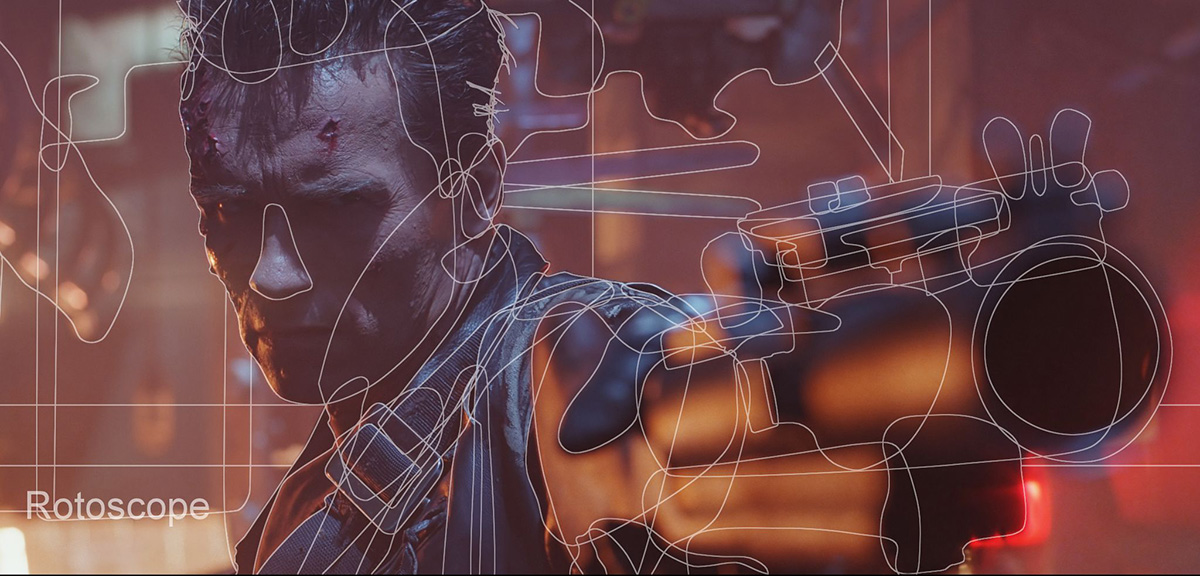
James Cameron loves stereo. He took full advantage of shooting in native 3D on Avatar, and has made his thoughts clear in recent times about the importance of shooting natively in stereo when possible. After also championing the stereo conversion of Titanic a few years ago, Cameron’s latest 3D re-release is Terminator 2: Judgment Day.
The 1991 film – a landmark event in both practical and digital visual effects – was first re-mastered in 4K, before receiving the stereo treatment from Stereo D (part of Deluxe). VFX Voice found out from the studio what the conversion process involved, and what some of the toughest scenes were to work on.
Readying a 25-year-old film
Before the stereo conversion could take place, Deluxe’s Post and Restoration Services Group, housed out of EFILM, scanned the film at 4K on a custom wet gate scanner. “The wet gate liquid conceals and reduces most base and emulsion scratches,” explains Deluxe’s Allan Tudzin. “The technology submerses the film frame into liquid, making the scratch invisible to the camera.”
The Post and Restoration Services Group also removed dirt and repaired scratches. The manual ‘dust busting’ procedure took hundreds of hours to clean the 4K scans back to their original pristine condition, but it was a necessary step since the 3D conversion process essentially involves rotoscoping thousands of images in every frame.
“It’s so much fun when you get to work on the great, great films, and this is one of those. It just holds up. Jim [Cameron] shoots with so much depth that when you get your hands on it you can really play with all his visual cues.”
—William Sherak, President, Stereo D
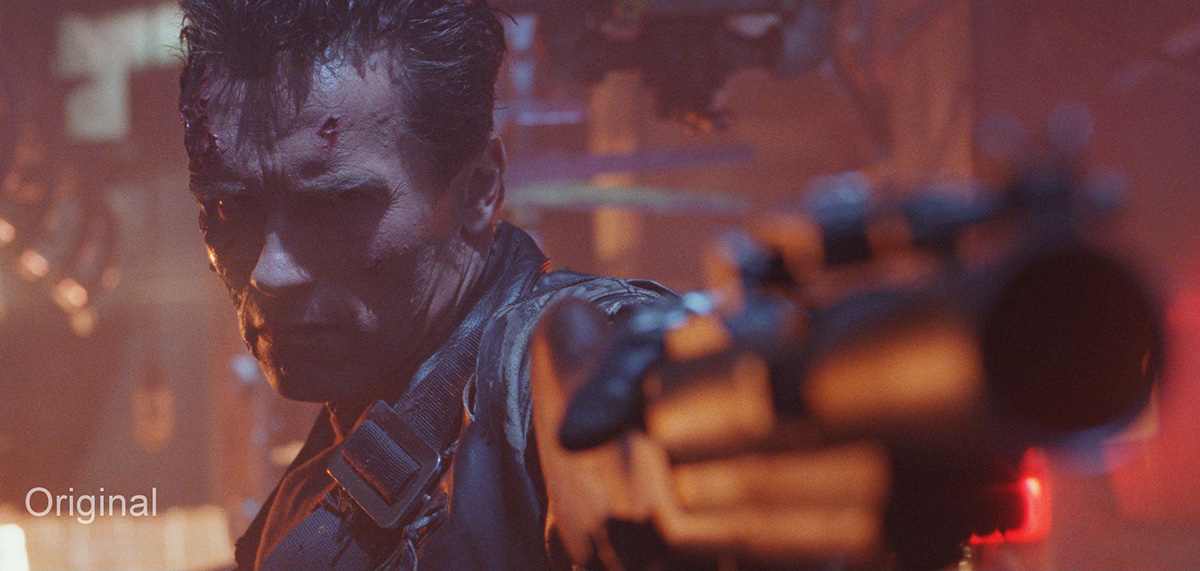 The original frame for a scene from Terminator 2 3D that would receive the stereo conversion treatment.
The original frame for a scene from Terminator 2 3D that would receive the stereo conversion treatment.The film was calibrated in 4K by Skip, Cameron’s colorist, at Technicolor Hollywood using a selection of the best 35mm prints from the film’s first release. The entire process was supervised by Geoff Burdick from Lightstorm Entertainment (Cameron’s production company).
Some visual effects changes have been made to the film; Cameron has said in interviews that his only major visual effects alteration was retaining the glass windshield of the truck in the LA river canal scene until it is pushed out by the T-1000, for continuity purposes. But there also appears to be some stunt double face replacement work for Arnold Schwarzenegger’s T-800 character and other minor fixes.
Conversion: getting to work on greatness
Stereo D has worked on many old and new film conversions, but President William Sherak says Terminator 2 is one that stands out. “It’s so much fun when you get to work on the great, great films, and this is one of those. It just holds up. Jim shoots with so much depth that when you get your hands on it you can really play with all his visual cues.”
“Arnold really needed to look like Arnold in 3D because he’s such an iconic figure. He’s got such an iconic face and build that if it looks wrong, it’s always going to look wrong.”
—Russell McCoy, Stereo Supervisor
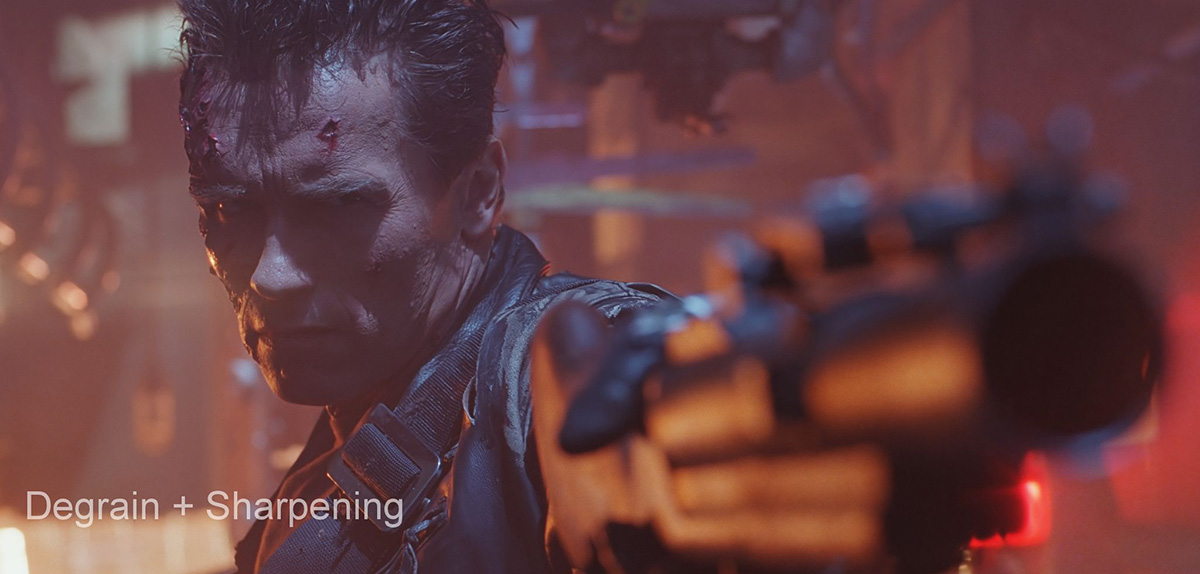 Degrain and sharpening is performed on the frame.
Degrain and sharpening is performed on the frame.The mandate from Cameron, notes stereographer Yoichiro Aoki, was simply to “make a great 3D experience,” while also keeping things as realistic as possible. That, adds stereo supervisor Russell McCoy, meant maintaining good internal shaping for all the characters, particularly Arnold Schwarzenegger as the now-good T-800 Terminator.
“Arnold really needed to look like Arnold in 3D because he’s such an iconic figure,” says McCoy. “He’s got such an iconic face and build, that if it looks wrong, it’s always going to look wrong.”
In fact, this aspect was so important that Stereo D even upped its number of rotoshapes on the conversion than usual. “I would say for a normal movie be, we might do 100 per cent roto-shapes, but we did like 150 or 200 per cent roto-shapes for James Cameron.”
“Every little detail in the depth map has to be perfect. Even the cloth, or the lapels on the jackets, the straps on the jackets; every little thing has to be roto’ed, every little thing has to have the right orientation, the right shaping, the right angle, and be put into the 3D world at the correct spot.”
—Russell McCoy, Stereo Supervisor
Incredibly, that effort took around 1800 artists about eight months to pull off. “It sounds like an exaggeration but it’s not,” says McCoy. “With a project that spans eight months, everyone gets a shot. And since there has to be so much detail and so much work put onto these shots, breaking it up into small teams just doesn’t work.”
How the stereo conversion worked
Like many specialist stereo conversion houses, Stereo D has its own proprietary approach to conversion, called VDX. The process involves producing the mounds of roto-shapes and then generating depth maps with off-the-shelf software.
“That sounds simple,” admits McCoy, “but on a project like this, every little detail in the depth map has to be perfect. Even the cloth, or the lapels on the jackets, the straps on the jackets, every little thing has to be roto’ed, every little thing has to have the right orientation, the right shaping, the right angle, and be put into the 3D world at the correct spot.”
 Roto shapes are made on key parts of the frame.
Roto shapes are made on key parts of the frame.A large part of the process also involves ‘finaling’, that is dealing with all the occlusion, and painting out all the artefacts that 3D creates to produce a final pristine set of left and right images. Artists are able to review their work on 3D monitors at their desktop, and in a Stereo D theatre.
T2’s big challenges
Some of the toughest parts of converting Terminator 2 involved dealing with film grain, as McCoy describes. “Grain was a challenge in those final steelworks shots where the characters are bathed in this beautiful red light on one side of the face, with this dark blue on the other side. To get the grain consistently off of them, we had to pull very detailed keys, and had to meticulously try and do highlights, midtones, and shadows differently across the whole movie.”
“I loved that shot where Sarah Connor shoots the T-1000 in his head. And you see this hole through his head. Seeing Sarah though that hole, in 3D, was really cool 3D to me.”
—Yoichiro Aoki, Stereographer
Another challenge came in the form of converting shots involving miniatures. These were tricky because of scale issues – an example is the nuclear blast over Los Angeles in a dream sequence (the result, suggests Aoki, was something even more grand than the original shot).
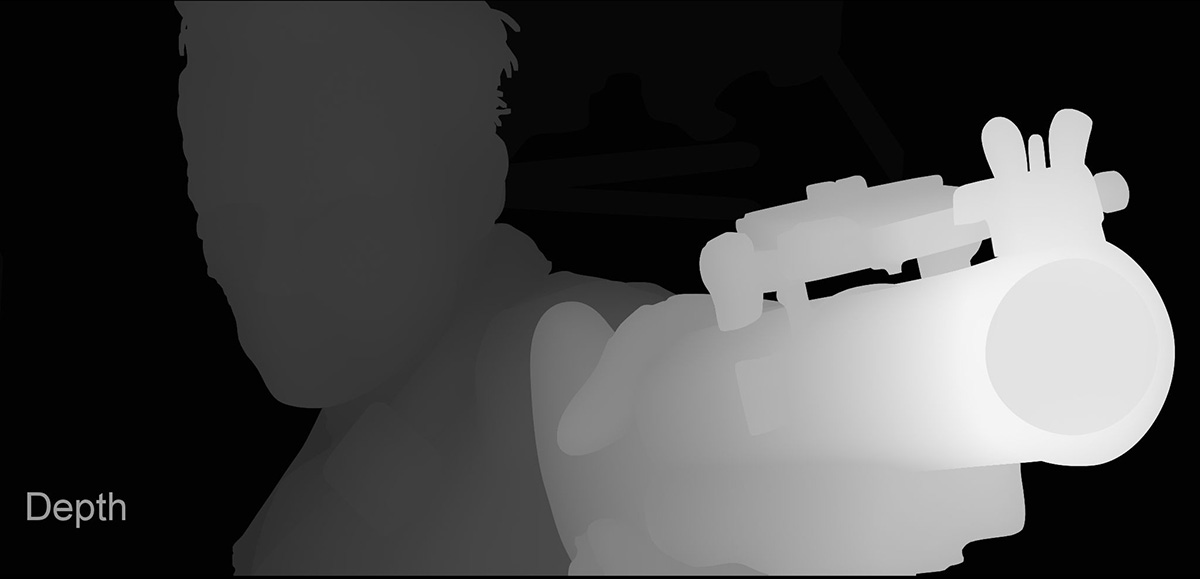 Finally, a depth map is generated so that different parts of the image can be placed in 3D space.
Finally, a depth map is generated so that different parts of the image can be placed in 3D space.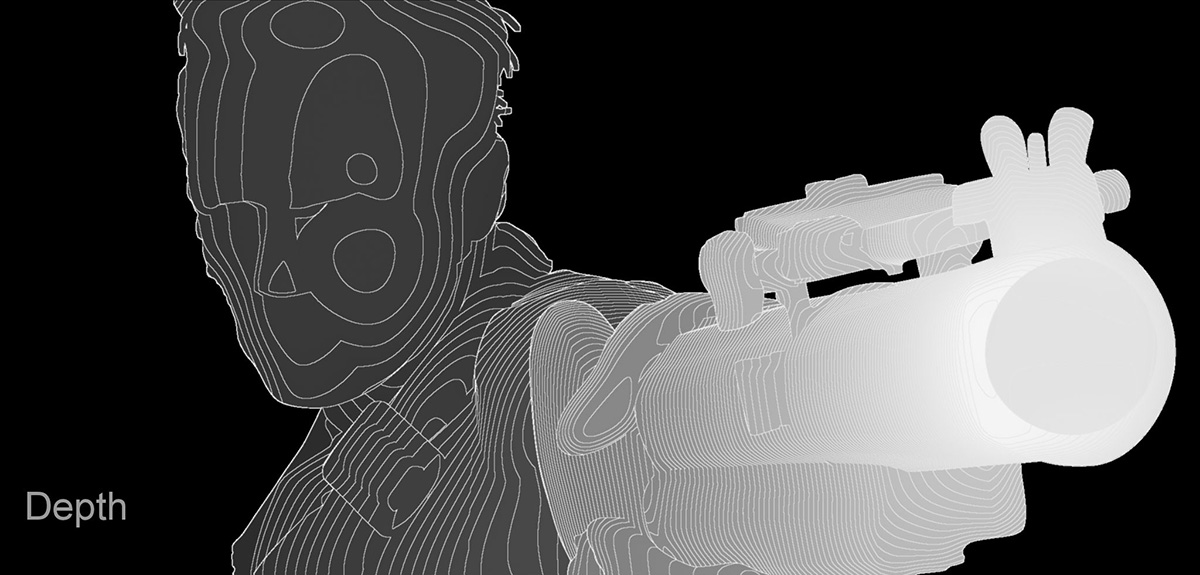
3D also used to enhance the dynamics of many of the chase scenes in the film, such as the one through LA’s canals. “We really worked hard on that sequence, and it really shows,” says McCoy. “The alley looks so much more narrow, and everything looks so much more dangerous in 3D, and I think it really sells well.”
“I loved that shot where Sarah Connor shoots the T-1000 in his head,” adds Aoki. “And you see this hole through his head. Seeing Sarah though that hole, in 3D, was really cool 3D to me.”